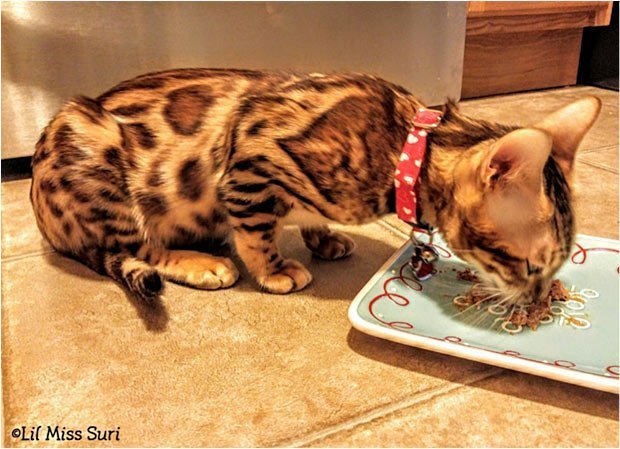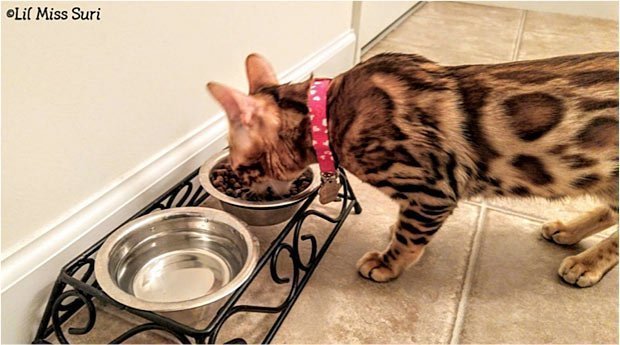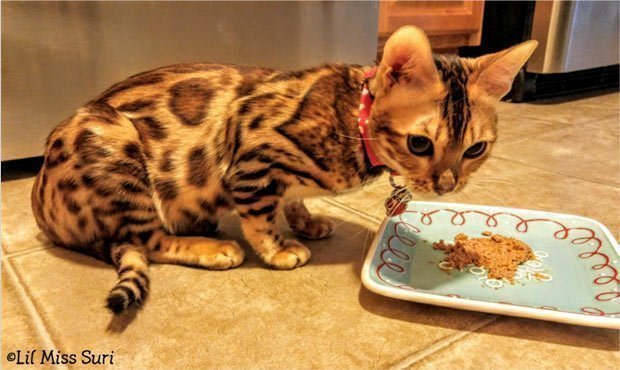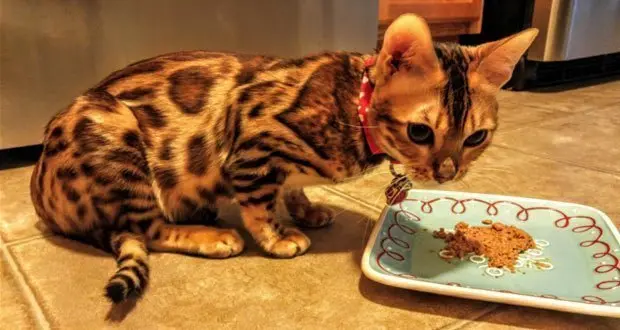[ads1] As animal lovers and pet owners, we are all aware that proper nutrition is vital to the health and overall wellness of any pet. However, exactly what constitutes as ‘proper nutrition’? How does one determine which brand or style of pet food is the right option for their cat?
With so many brands on the market, it can seem a daunting task to choose the right foods for your cat. Here are some tips when selecting your cat’s diet:

Understanding A Cat’s Nutritional Needs:
Not all carnivores are obligate carnivores. In fact, most aren’t. But cats are. As obligate carnivores, cats cannot digest plant-based foods efficiently, nor do plant-based foods provide the nutrients felines require. The digestive tracts of herbivores and omnivores are vastly different from that of the carnivore and able to adapt to a host of dietary options, but for the true carnivore, this simply isn’t the case.
Obligate carnivores, also known as “true carnivores,” are literally just that. Animals that, because of their genetic conditioning, must eat a flesh-based diet to thrive. To deprive a cat of meat is irresponsible, unethical, and ultimately detrimental to the health of the cat.
The feline digestive tract is short, and unable to process the nutrients contained in plant matter. Plant proteins do NOT contain all the amino acids critical for the health of obligate carnivores. Unlike humans who have the physiological ability to turn plant proteins into the missing pieces needed for a complete amino acid profile, cats don’t have that capacity. Protein in animal tissue has a complete amino acid profile. Amino acids are the building blocks of protein.
Cats also require taurine as a fundamental building block of good health. Yes, of course it can be bought as a supplement, but ALWAYS keep in mind that chemically derived supplements, for pets OR people, cannot be fully absorbed by the body and are simply passed as waste (which is why whole food vitamins are always best!).
However, this is the equivalent of eating nothing but iceberg lettuce and taking a synthetic multivitamin. That vitamin can’t possibly make up for all the nutrients missing from an iceberg lettuce-only diet. Better quality proteins have higher biological values, meaning they are easier for the body to digest, absorb, and use properly.
Taurine is a nutrient that can be found in animal flesh, though the best quantities are located in the organ meat; specifically the liver and heart.
Ingredients:
Cat owners need to avoid non-meat sources of protein, for example, soy, wheat, oat, grains, and corn, as these are not species-appropriate foods for cats. These sources are simply used as fillers, offering no nutritional value to your cat’s diet.
So many brands found in grocery stores contain animal by-product, which consists of leftovers unfit for human consumption such as feet, beaks, undeveloped eggs, and intestines; everything BUT clean meat. It’s a cheap, low quality source of protein that is far less digestible than clean meat meal. These ingredients are a tell-tale sign of poor quality foods.
When looking for the best food, meat or at least a named meat meal (like chicken meal or lamb meal) should be listed before any grains. As obligate carnivores, cats are designed by nature to eat protein from meat sources, not grains. The high grain content of many pet foods is also a primary contributor to the growing obesity and allergy problems in pets.
SEE ALSO: How To Feed Your Bengal Cat A Healthy Diet

Types Of Available Foods:
There are just SO many types of foods to choose from. Dry kibble, wet canned, frozen raw, fresh homemade raw, special dietary need foods…How do you decide what is right for you and your cat?! There is always a lot to consider: do you have a picky eater? Does your cat have allergies to certain foods? Are you managing a health condition or helping your cat lose weight? Are you working with a large or limited monthly food budget? Each food type has its pros and cons.
Dry foods:
Dry foods are a readily available, typically more affordable food choice for many owners. While dry foods can offer a grain free, nutritionally complete diet, it is widely believed it is not the ideal diet for cats. Cats on dry food only diets may not get enough water. They can become chronically dehydrated which contributes to health problems like Chronic Renal Failure (CRF) and urinary crystals.
If you feed your cat dry foods, it’s essential to provide a clean, appealing source of fresh water. Pet water fountains work well enticing cats to drink, and their filters ensure a constant fresh, clean water supply.
Dry commercial cat foods are also linked to obesity. Part of this is due to the high carbohydrate levels in many kinds of kibble, and part is due to many owner’s choice of free-feeding dry food which gives cats 24-hour access to food. If your cat is getting a little pudgy, ration the dry food rather than serving it all-you-can-eat style. To avoid feline diabetes, stick to a premium dry food.

Wet foods:
So, after reading about dry foods, wet foods MUST be a better choice, right? Not necessarily. The cheapest low quality wet food is a worse choice than the highest quality dry food. Feeding a cheap wet food is similar to feeding your kids fast food every day.
When choosing a high quality canned food, always check the ingredients. It should list an animal protein source as its number one ingredient, and ideally, it should not contain meat by-products. Canned foods are also higher in protein and lower in carbohydrates than dry foods. Their high water content helps increases a cat’s overall fluid intake, which keeps the kidneys and bladder healthy. Because the ingredients are more easily digested and utilized by the cat’s body, canned foods produce less solid waste in the litterbox.

Raw diets:
When feeding cats, the most logical strategy is to feed a diet that most closely mimics the natural prey diet in the wild. Cats often eat an entire prey animal if it is small, and will eat nearly everything except the intestines of a larger prey animal. This includes the bones, as raw bone is highly digestible and is a primary source of calcium. Cooking bone not only reduces the nutrients available but also makes the bone brittle and dangerous.
A raw diet is an excellent way to mimic a cat’s wild eating habits. Raw, frozen, and reconstituted freeze-dried or dehydrated foods also work very well. However, many people aren’t able to go with completely homemade, and commercial products can be expensive. Raw meat is really considered the Gold Standard of feeding an obligate carnivores.
If you plan on trying your hand at a homemade raw diet, be SURE to research, research, research. The proper balance of meat, bone, and certain additives are crucial to a stable, complete diet for your cat. If you would like to feed your cat a raw diet but for whatever reason are unable to do so, you can always supplement your cat’s diet with bites of fresh raw beef, chicken, turkey, etc whenever you are cooking.
I usually recommended to avoid raw chicken and turkey due to bacteria, but it can still be given. Do avoid giving your cat raw fish though. An enzyme in raw fish destroys thiamine, which is an essential B vitamin for your cat. A lack of thiamine can cause serious neurological problems and lead to convulsions and coma. Your cat would certainly love getting a special treat like a chunk of raw beef roast, steak, or ground beef.
Personally, I feed a combination diet of all of the above. I have a pretty picky eater, so finding foods she will readily eat proved challenging. I keep a high quality, grain free, dry food available 24/7. I also feed a high quality, minimal ingredient wet food twice a day. When cooking, I also provide my cat with raw bites of whatever meat I’m cooking with. She LOVES her bites of raw beef!
When researching food brands for your cat, online product reviews can be a huge help. These can help you weed out any brands you would like to try. Always read both positive and negative reviews. If a review left is negative simply because one cat refused to eat it, don’t take it too seriously as every cat has different tastes. If you buy a new food that your cat refuses to eat, please consider donating it to a local cat rescue or shelter instead of just tossing it out.
Some reputable pet companies will even offer a full refund for a food purchase, but will ask you to donate the remaining food you have on hand. Whenever you consider changing up your cat’s diet, please always do so slowly and properly. Be sure to mix small amounts of the new food into the food you’re currently feeding, gradually increasing the amount over time. If you have questions or concerns, always contact your veterinarian for advice.




